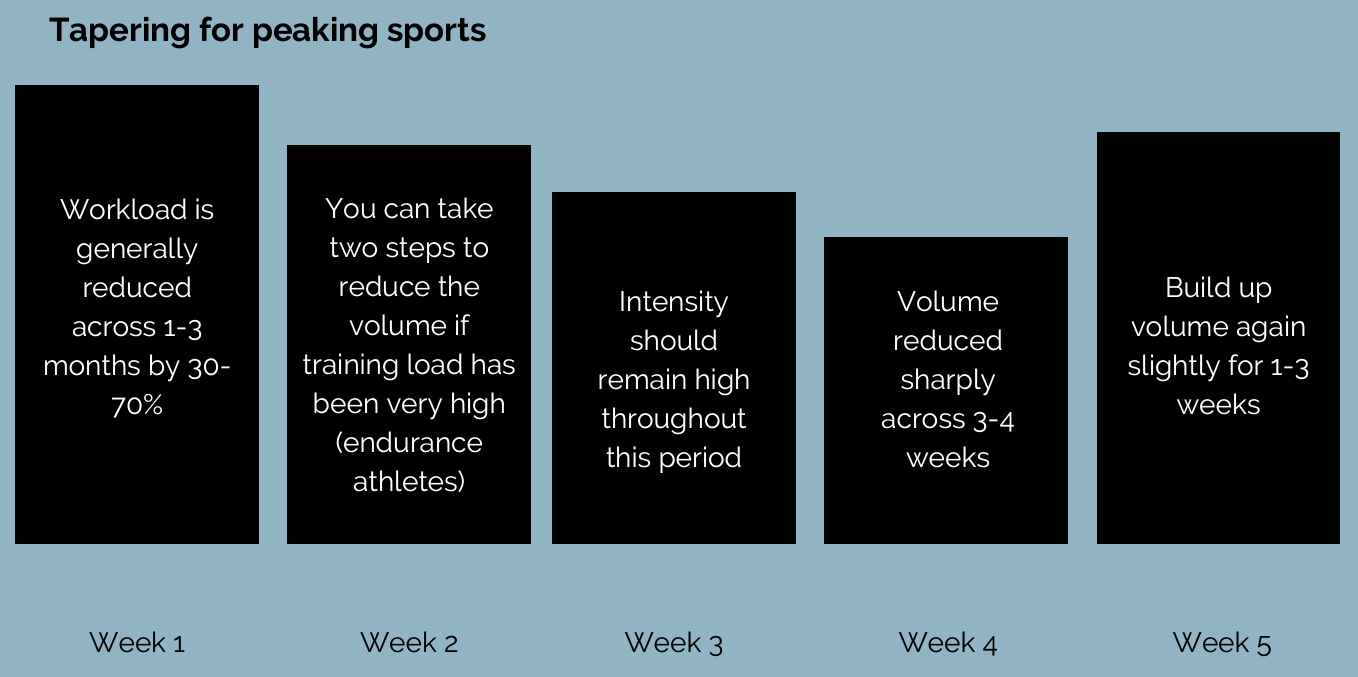As always please note that the principles presented here may not be suitable for all clients, always take advice from your health professional who know your specific circumstances.
The fatigue and super-compensation theory
The principle underpinning training: performance = fitness developed – training fatigue.
From stimulus (the training load), follows fatigue.
Too little fatigue, and the intensity needed to reach improvement in training performance won’t be reached.
Too much fatigue and the body will struggle to recover adequately, meaning improved performance won’t be achieved.
If enough fatigue is reached through training load, overcompensation will be achieved, where the body improves its tolerance and ability to load. This results in improved fitness and performance.

Planning training and periods
For some athletes, they will know exactly what their year is going to look like in terms of competitions or in-seasons coming up in training. Utilising this knowledge to plan training right up until that competitive period is crucial for performance. In this course, they broke down that planning into 8 blocks.
- Type of period: i.e. preparation/pre-season, competition/in-season, transition/off-season
- Phases of periods: General or specific preparation (will be explained more later)
- Macrocycles (Generally 2-3 months, a group of mesocycles)
- Mesocycles (Generally 4-6 wks, a group of microcycles)
- Microcycles (Generally a week of training or 4-11 days)
- Day (Consider arrangement of training components e.g. tactical or strength first?)
- Sessions (the particular sessions in a day)
- Training units (components of a session e.g. warm up, strength etc


Primary Considerations
- What are we training for (sport, life event?)
- Sports: Is it seasonal, fixture
- Work backwards in time from fixtures
- What dominant physical qualities need to be addressed?


Secondary considerations
Next, within those phases of periods you’ve identified, there are different priorities, and different strength goals that have to be attained for performance. The pre-season phase is where you build strength and skills needed, broken down into general and specific preparation.
General Preparation
- General training for fundamental fitness qualities
- Will entail achieving workloads of approx 30-40% more of during the competition or in-season training
Specific Preparation
- More specific training to improve sports related fitness
- Less physical training is done, but what is done is done at high intensity
- Entails of achieving workloads of 10-20% more of a competition or in-season training
Competition Period
- Aim is to maintain fitness qualities developed during general / specific preparation
- Fitness qualities will only need 40-70% less than the preparation period to be maintained
- Keep intensity high, but reduce volume
Workload
In order to meet these requirements for training load and intensity, you have to know how to calculate workload. Workload is calculated using time spent in sessions and the difficulty of sessions using RPE.
Workload = Length of session (mins) x RPE (1-10)
Periodisation
So in theory we know what workload we need to be achieving, but how do we get there?
A periodised training plan, this uses gradual load to improve training load capabilities. Rather than just upping the training load, e.g. your squatting weight, every week. It uses a method to allow recovery and supercompensation (that improvement in performance) every couple of weeks while your body recovers. I’ll use squatting weight as a simple example below, but in theory you could do this for anything – planning intensity for runners with their pace, in speed sessions with the time needed to complete a sprint in, etc.
e.g. In a months training:
Week 1: Normal Week (Squatting 60kg)
Week 2: Normal Week (Squatting 60kg)
Week 3: Load Week (Squatting 66kg) – Increased volume of 10-35% of “normal” week
Week 4: Deload Week (Squatting 45kg) – Reduce volume by 25-35% of “normal” week
For the next month, week 1 would start on a slightly higher weight (approx. 10% higher), and the process begins again.
Tapering
Tapering is an important process leading up to a competition/event where someone reduces their training load to improve their performance on the day. The course also went through how to achieve this:
- Workload is generally reduced across 1-3 months by 30-70%
- You can take two steps to reduce the volume if training load has been very high (endurance athletes) E.g. over a 4-7 week period: Volume is reduced sharply across 3-4 weeks, then build up volume again slightly for 1-3 weeks, then reduce again until you reach that 30-70% margin.
- Intensity should remain high throughout this period.









